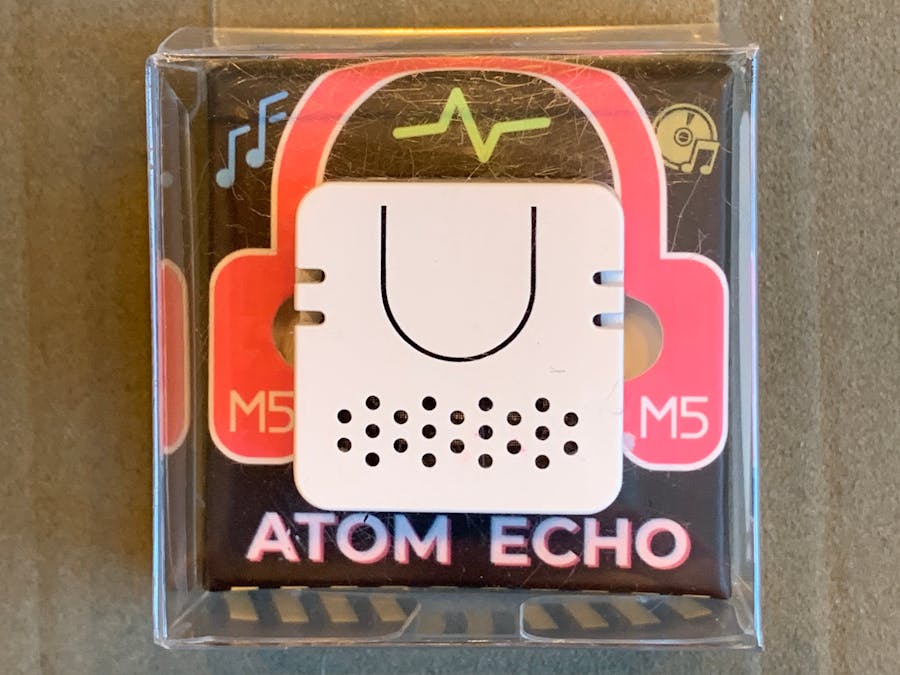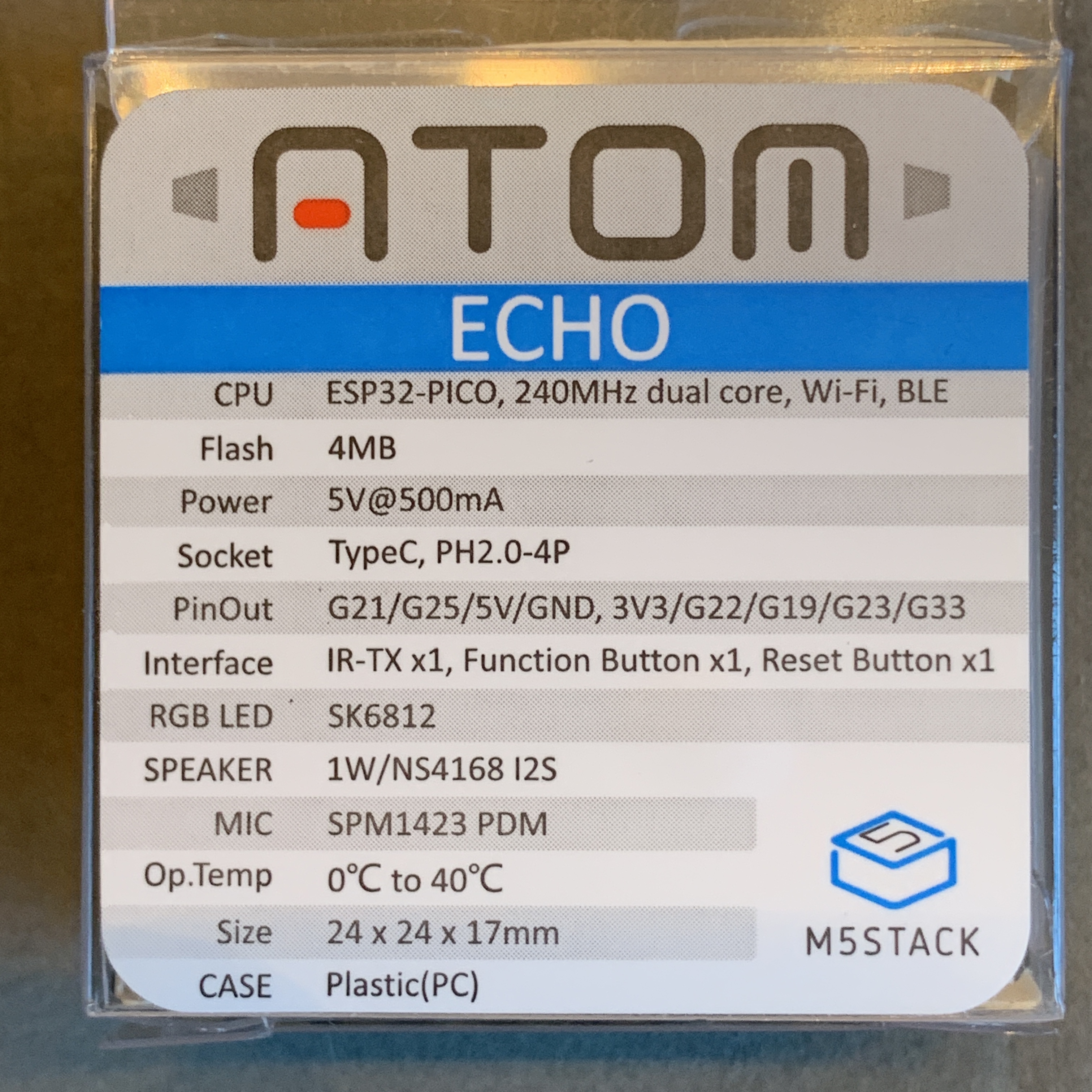Sometimes, and especially appreciated in Corona times, one does have a bit of luck: I received an absolute brand new M5Stack module ATOM ECHO parallel to the market launch.
Similar to M5's modules ATOM LITE and ATOM MATRIX, this one has an ESP32-PICO CPU with a mini WiFi/Bluetooth antenna, a button, IR-LED, RGB-LED, a USB interface and some mini jacks for some GPIOs. But the ATOM ECHO now contains additionally an I2S-based "soundcard" with a digital-to-analog converter NS4168, a small loudspeaker and a microphone with ADC SPM1423 PDM in the extrem small housing. At first I could hardly believe that this hardware module could also work well.
Actually I had now intended to miniaturize my ESP32-Internet-Radio with this hardware. I have some more pretty ideas what to use this module for in the future as it has the powerful ESP32, some free GPIOs, WiFi and BLE 4.0 plus the fantastic audio capabilities while being so small - see below...
... But the creative M5Stack engineers, however, first seduced me to play with it: The ECHO module comes with a software that instantly turns it into a miniature "smart speaker" when connected to a 5 Volt USB power supply and via Bluetooth/A2DP wirelessly to a smartphone or any other computer.
There are tree ways to power the ATOM-modules with 5V: USB-C, GROVE side connector, bottom-side female connectors. I wanted a short connection that forms a single unit of module and a power bank. Soon I made a small holder for the module out of a USB plug, four board connectors and a piece of breadboard. Done!!
After very simple establish of the bluetooth audio connection the results are amazing! Within a radius of about 8m around my IPhone a stable Bluetooth monaural audio output was possible. Of course the small 0.5 Watt-loudspeaker module can't work miracles and so it sounds a bit high frequency if not embedded in a larger front. The audio quality and volume are certainly very sufficient to output an audio acknowledgement or a voice message, to speak a warning or a measured value.
If necessary, the audio volume and quality can be increased. To do this, it is sufficient to better acoustically separate the rear area of the small speaker from the front area. A small front panel or placing the ATOM ECHO within a larger housing can be sufficient for this. In my first experiment it was only a credit card-sized cardboard panel with a corresponding opening for the speaker. This increases volume and it doesn't sound so high-pitched anymore.
... but this gave me too the idea to apply the theory of optimal impedance matching at antennas to the audio technology: I tested how a funnel in front of the speaker as a smooth transition to the medium air can affect the audio quality.
A long time ago, I learned that 10GHz radio frequency and audio frequency sound behave physically similarly because of the similar wavelengths. So I flanged my old self-built 25dB horn antenna for 10GHz amateur radio to the audio module and was very surprised how good it sounds because of the better matching.
Old gramophones are known to work on the same principle and for the Iphone you can even buy appropriate "base stations" as passive speakers.
And that is how it sounds then:
So this was a rather fun and very experimental first test of this really promising new ESP32Pico module ATOM ECHO from M5Stack.
But next I will try more seriously to realize my practical project ideas with this mini module:
- Subminiature internet radio
- Talking clock as an extension of my ATOM LITE/MATRIX project "NeoPixel-ATOM-Clock" or my kinetic object "Stargate1"
- Installation in one of my NeoPixel-WordClocks with additional internet radio and voice output, which I had previously built with discrete components (ESP32-NodeMCU + external I2S audio amplifier + small speaker)
I think this will be as much fun as this first experiment.






Comments
Please log in or sign up to comment.